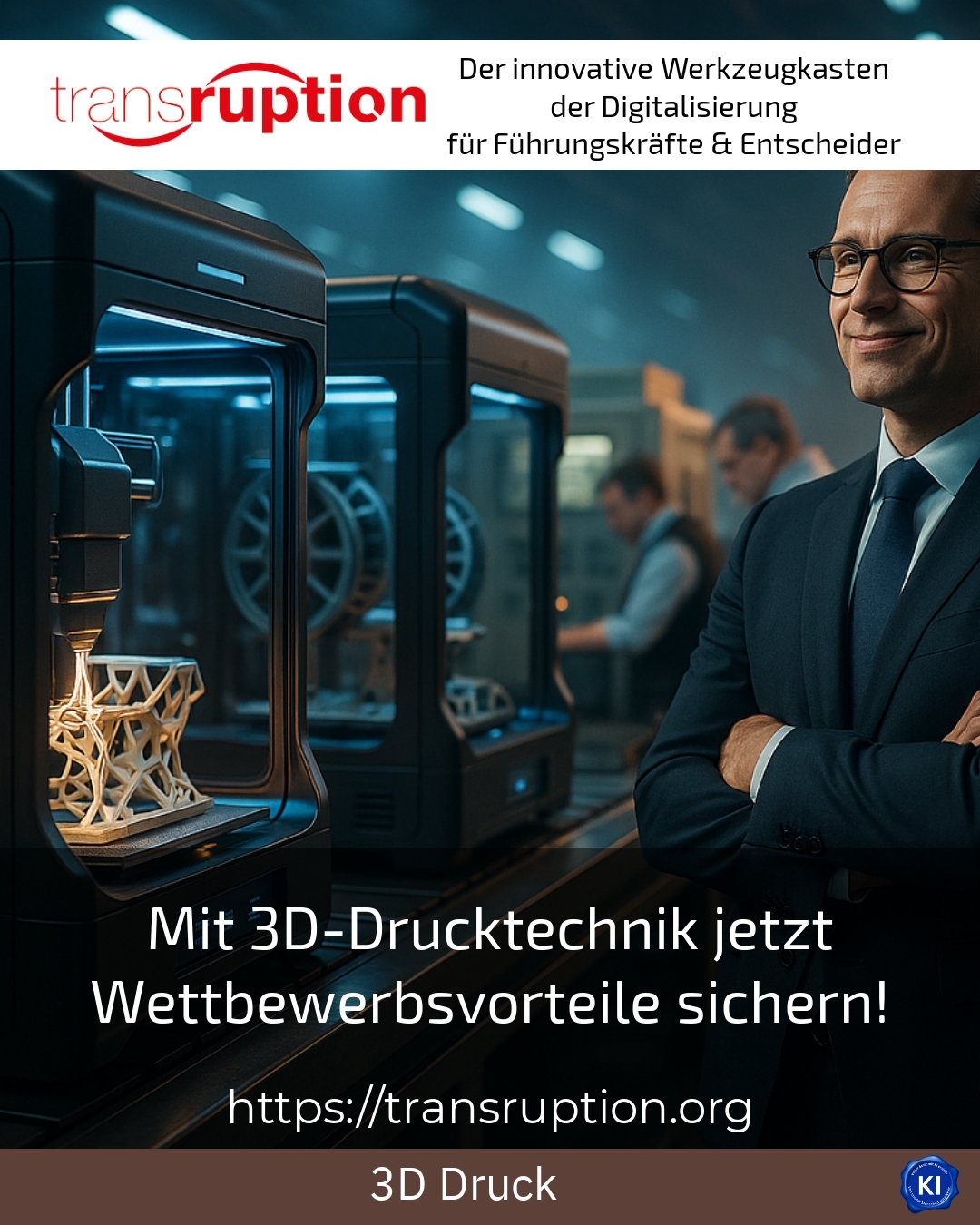Today, 3D printing technology opens up numerous opportunities for companies to clearly stand out from the competition. This technology offers decisive advantages, particularly in industries with fast innovation cycles and high demands for customisation. With the targeted use of 3D printing technology, production processes can be made more efficient, supply chains shortened and costs reduced - factors that make the difference more than ever in a globalised market environment.
Flexibility and quick customisation options thanks to 3D printing technology
Companies often report on the high level of flexibility that 3D printing technology offers compared to conventional manufacturing processes. An example from the mechanical engineering sector shows how functional parts can be manufactured within just a few days, significantly shortening development cycles and enabling errors to be recognised more quickly in the prototype phase. This means that even small companies can respond more quickly to market changes and fulfil individual customer requirements efficiently.
Customised and complex components using 3D printing are also becoming increasingly important in the automotive industry. Manufacturers produce spare parts on demand, which reduces warehousing costs and at the same time ensures the supply of spare parts for many years. For example, one automotive company used additive manufacturing to produce specially customised car seats with varying degrees of hardness, which significantly improved comfort for drivers. At the same time, the time-to-market is shortened by saving on expensive moulds for small series production.
BEST PRACTICE at the customer (name hidden due to NDA contract) A medium-sized tool manufacturer implemented 3D printing technology to produce complicated devices. As a result, several subcontractors were no longer needed and lead times were reduced by two thirds. The economic potential was particularly evident in the reduction of planning and production time.
Optimisation of supply chains and cost savings
3D printing technology not only supports companies in product development, but also helps to simplify supply chains and make them independent of international suppliers. Spare parts can be produced directly on site instead of being stored for years. This is particularly helpful in the logistics and transport sector, where long delivery times could lead to production downtime.
Another example can be seen in aircraft construction: complex components that are associated with high costs and long production times using traditional methods are not only produced more cost-effectively but also more quickly with the help of additive manufacturing. This ensures a sustainable competitive advantage through minimised storage and transport costs, lower material consumption and faster market launch of new products.
BEST PRACTICE at the customer (name hidden due to NDA contract) An aviation company used 3D printing technology to produce specific brackets for cabin installation. The parts are lighter and precisely fulfil the high quality standards. This enabled manufacturing costs to be reduced by 40 % and delivery times to be halved.
Rapid prototyping as a driver of innovation
Additive manufacturing enables prototypes to be produced quickly and cost-effectively. Companies can use it to accelerate their development and innovation. This means that changes to design and function can be tested quickly and implemented in the shortest possible time without having to rely on expensive and time-consuming tools.
Start-ups and established companies often report significantly shorter product development cycles, which simplify market entry. This not only opens up new market opportunities, but also strengthens customer loyalty through customised offers that directly take customer wishes into account.
BEST PRACTICE at the customer (name hidden due to NDA contract) A team of developers in the field of medical technology uses 3D printing technology to produce customised prostheses. Rapid customisation to the desired specifications allows for flexible patient care and enables the development of innovative designs.
My analysis
3D printing technology has proven to be a powerful tool for securing competitive advantages for companies in times of dynamic markets and high customer demands. The ability to produce flexibly, develop prototypes quickly and optimise supply chains opens up new areas of business and significantly reduces costs. Companies that actively utilise these opportunities can increase their innovative strength and make their production processes fit for the future.
Further links from the text above:
[1] 6 underestimated benefits of 3D printing for your supply chain
[2] 3D printing processes: Competitive advantages for decision-makers
[3] What are the advantages of 3D printing?
[4] Advantages of 3D printing in the industry
[6] Cars and aeroplanes: how 3D printing brings competitive advantages
[12] Competitive advantage thanks to 3D printing
For more information and if you have any questions, please contact Contact us or read more blog posts on the topic TRANSRUPTION here.
















